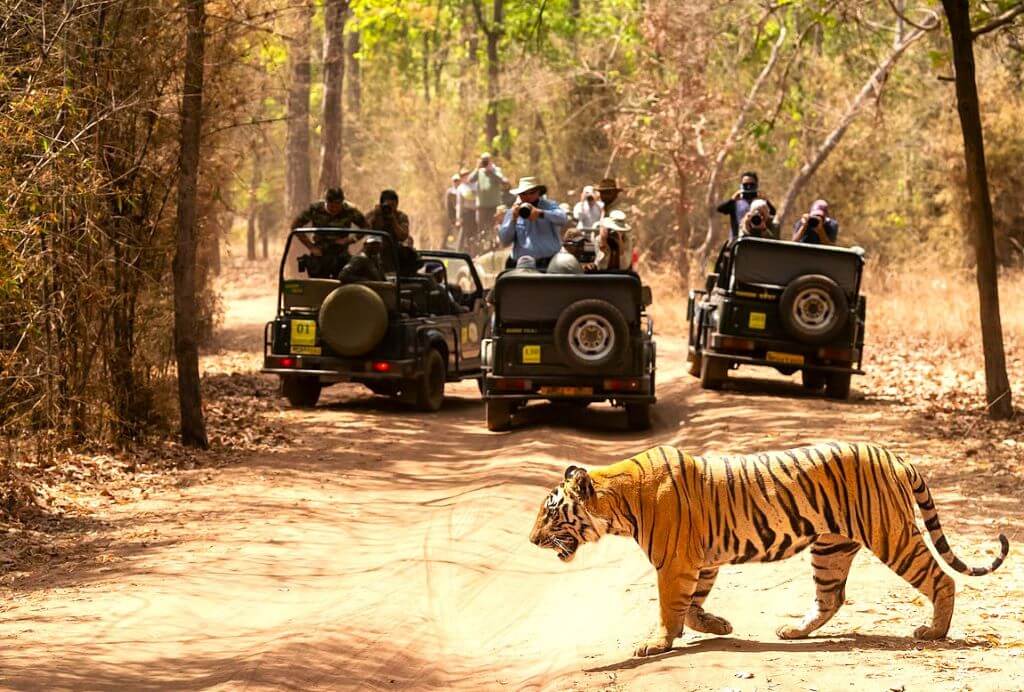India is one of the best places in the world to see tigers in the wild. With many national parks and reserves dedicated to tiger conservation, visitors can experience thrilling safaris while enjoying India’s beautiful forests, rivers, and grasslands. Here’s a guide to the top places for a tiger safari in India.
Best Tiger Reserves in India for Safari
Ranthambore National Park
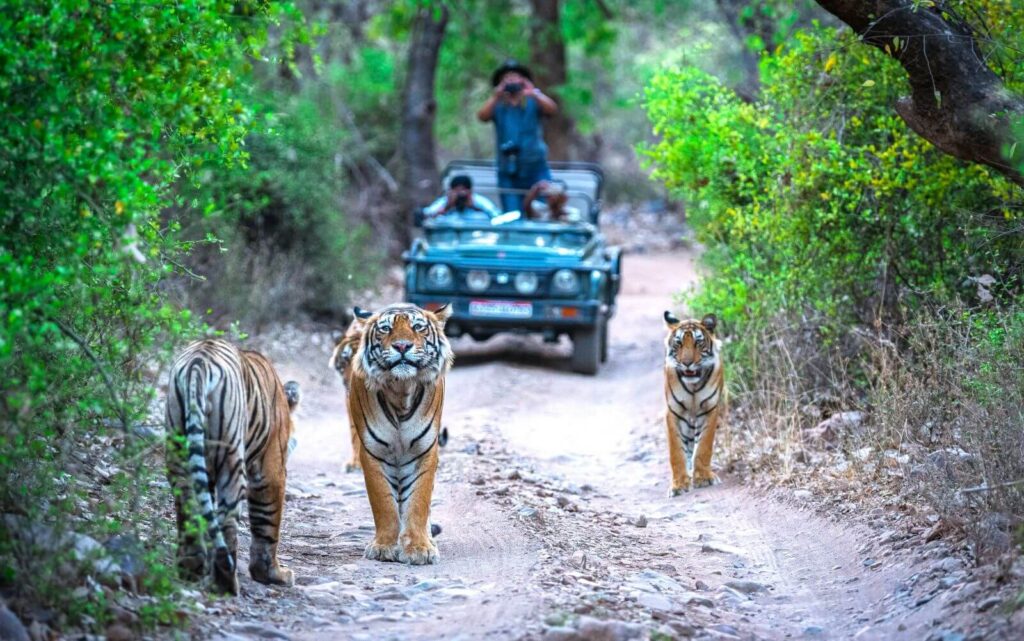
Located in Rajasthan, Ranthambore is one of the most famous national parks for spotting tigers. The park has a good number of tigers, making sightings more likely. Spread over 1,334 square kilometers, Ranthambore’s forests, grasslands, and lakes create the perfect home for these big cats.
Jeep safaris in Ranthambore take visitors deep into the park, offering a great chance to see tigers resting or hunting. The park is divided into several zones, with Zones 1 to 6 being the best for tiger sightings. The best time to visit is between October and June, especially in summer when tigers come out in search of water.
Bandhavgarh National Park
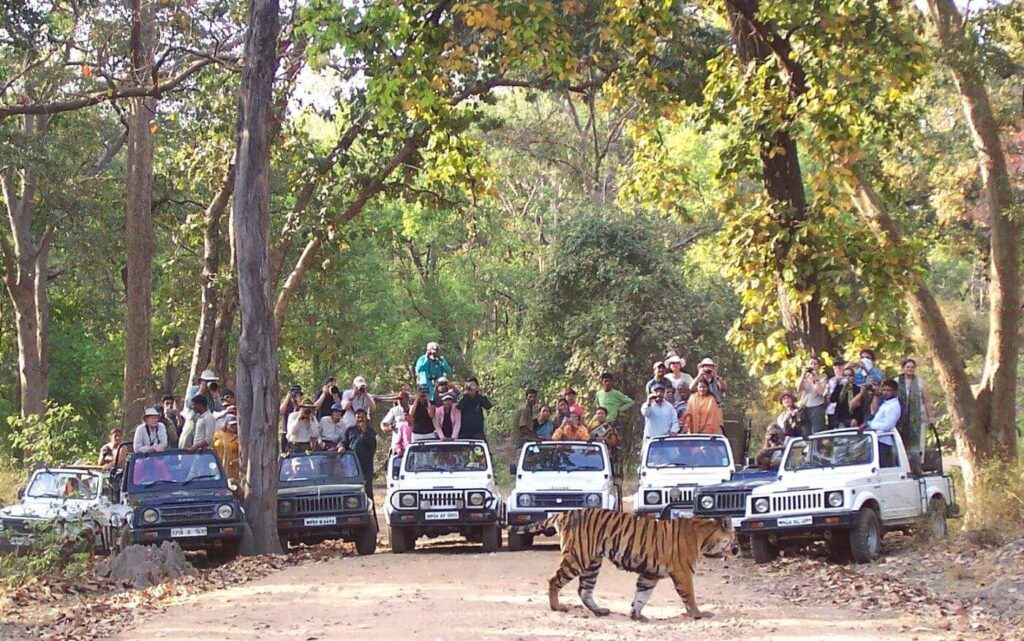
Situated in Madhya Pradesh, Bandhavgarh has one of the highest tiger populations in India. This park covers 1,536 square kilometers and has forests, open meadows, and rocky hills that tigers love.
There are three safari zones in Bandhavgarh—Tala, Magadhi, and Khitauli—where visitors have a good chance of spotting tigers. The Tala zone is the most popular for sightings. The park’s beautiful landscape and rich wildlife make it a top choice for tiger lovers.
Kanha Tiger Reserve

Kanha National Park in Madhya Pradesh is known for inspiring Rudyard Kipling’s “The Jungle Book.” It is one of the best-managed parks in India and is famous for its large tiger population.
Safaris in Kanha give visitors a good chance to see tigers, as well as other animals like leopards and barasingha (swamp deer). The park is divided into four zones—Kanha, Kisli, Mukki, and Sarhi—each offering exciting wildlife experiences.
Jim Corbett National Park
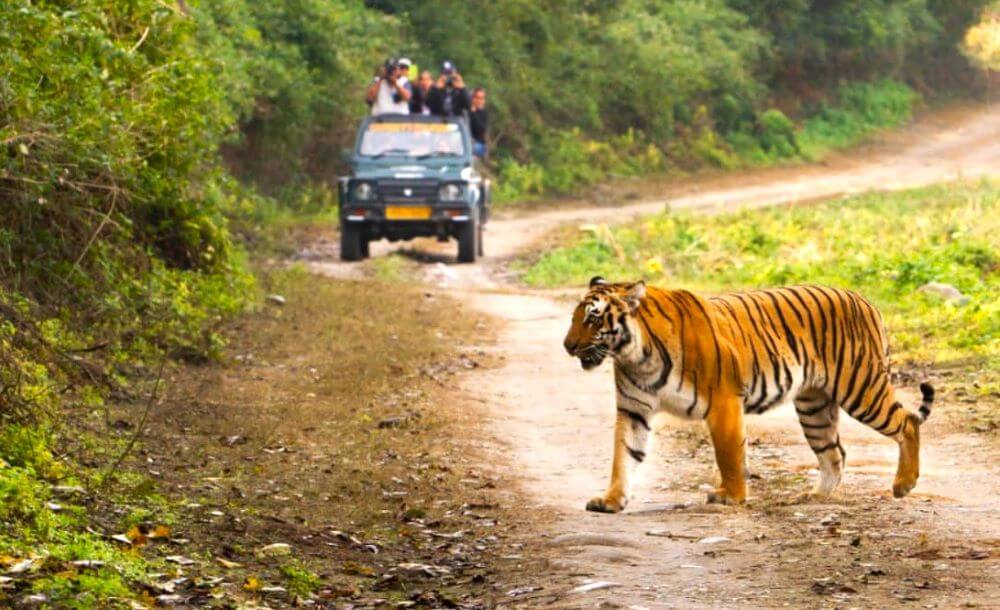
Jim Corbett National Park in Uttarakhand, established in 1936, is the oldest national park in India. It is home to many tigers and offers stunning landscapes of forests, hills, and rivers.
The best safari zones for tiger sightings are Dhikala and Bijrani. Jeep safaris are the most popular, but some areas also offer elephant safaris. Corbett’s natural beauty and variety of animals make it a great place for wildlife lovers.
Tadoba National Park
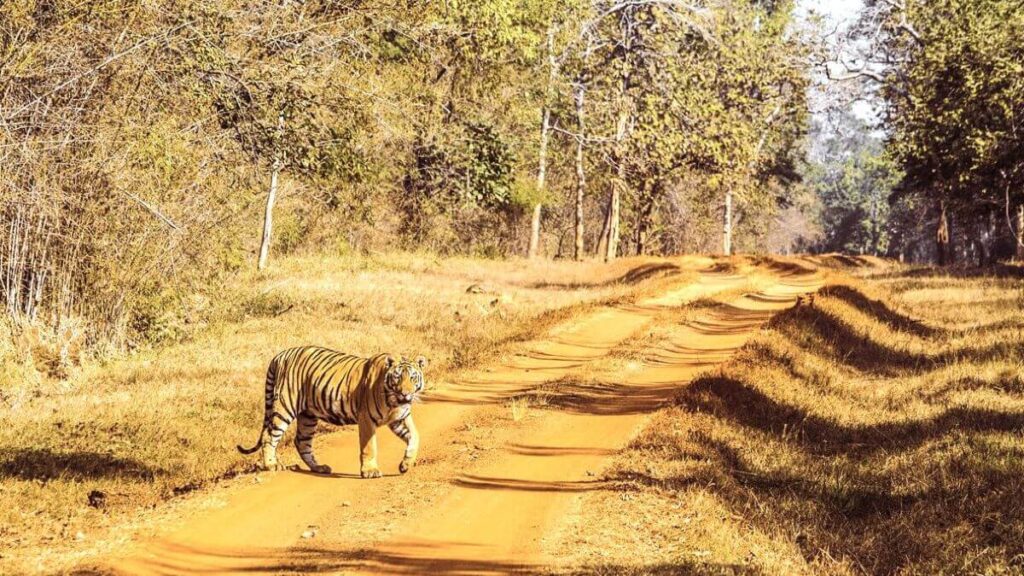
Located in Maharashtra, Tadoba Andhari Tiger Reserve is known for its high tiger population. The park has dry forests, which make it easier to spot tigers in the open.
Jeep safaris in Tadoba take visitors to the best areas, such as Moharli and Kolsa, where tigers are often seen near waterholes. The best time to visit is from March to May when tigers come out to drink water during the dry season.
Bandipur National Park
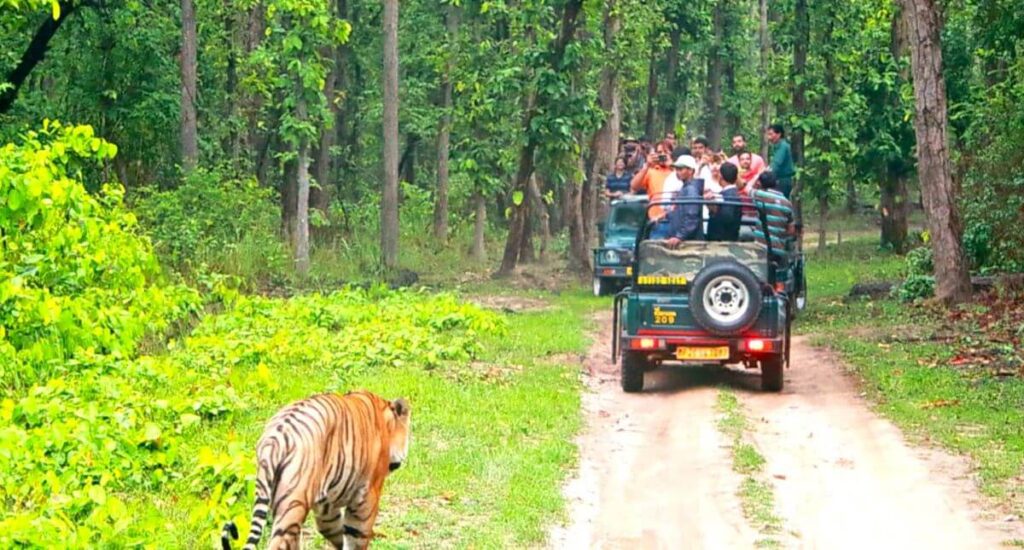
Bandipur National Park in Karnataka is one of the best places to see tigers in South India. It is part of the Nilgiri Biosphere Reserve and is home to many animals, including tigers, leopards, and elephants.
Jeep safaris in Bandipur offer good chances of spotting tigers, especially during the dry months from October to May when they come out to find water.
Nagarhole National Park
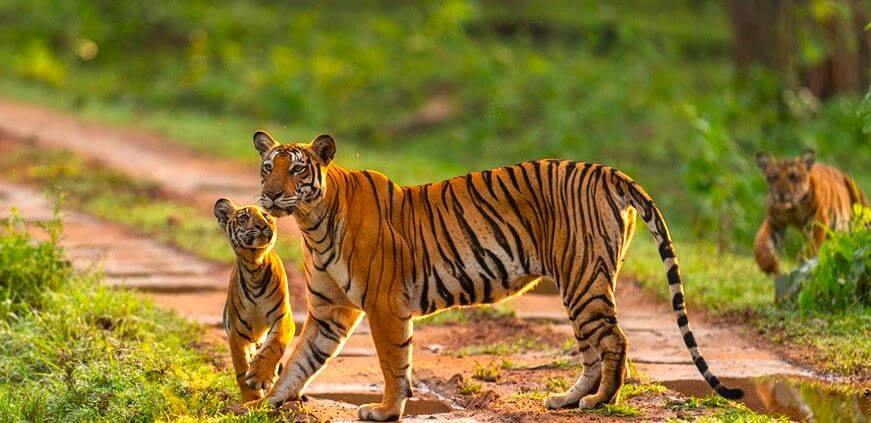
Nagarhole National Park, also in Karnataka, is another great place for tiger safaris. It has thick forests and is home to many Bengal tigers.
One of the best places to spot tigers here is near the Kabini River, where they come to drink water. Jeep safaris take visitors deep into the forest, offering a chance to see tigers, leopards, and elephants.
Satpura National Park
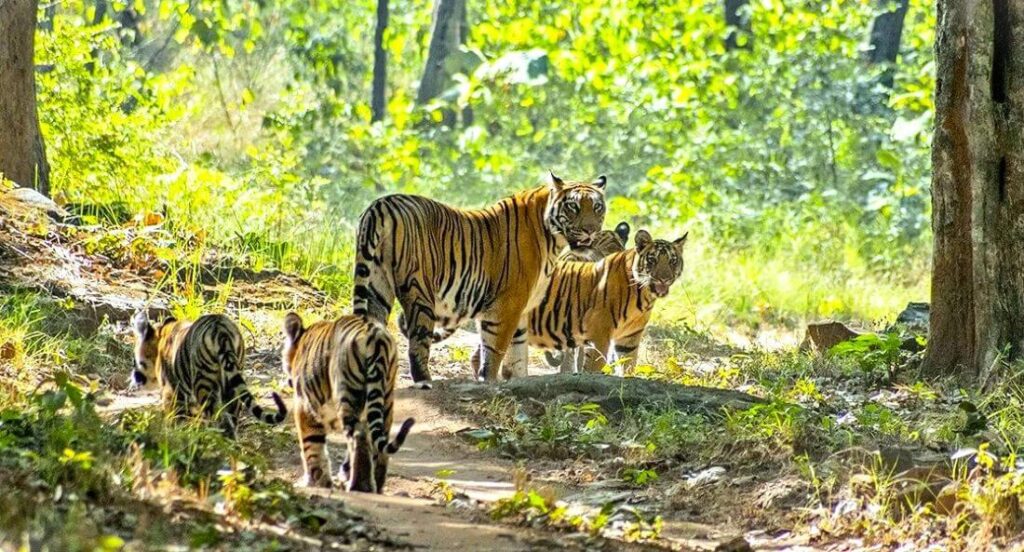
Satpura National Park in Madhya Pradesh offers a unique safari experience. Unlike most other parks, Satpura allows walking and canoe safaris in addition to jeep safaris, giving visitors a different way to explore the wildlife.
The park has dense forests, hills, and rivers that provide a good habitat for tigers. While tiger sightings may not be as common as in other parks, the peaceful and untouched nature of Satpura makes it a special place to visit.
Sundarbans National Park
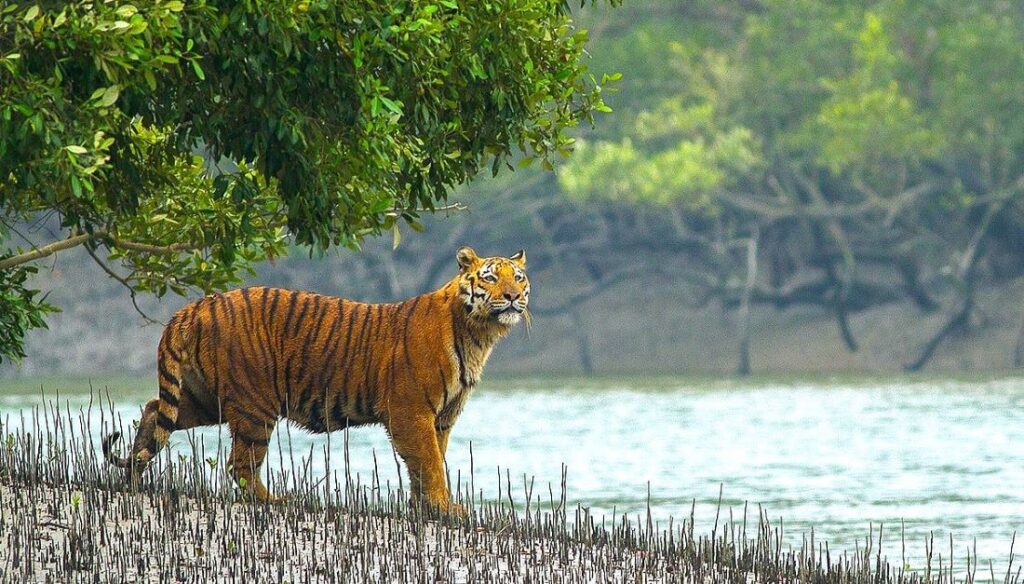
The Sundarbans in West Bengal is the largest mangrove forest in the world and is home to the Royal Bengal Tiger. This park is unique because its tigers are known to swim in the rivers and creeks.
Unlike other parks, safaris in Sundarbans are done by boat. While spotting tigers can be difficult because of the thick forests, visitors may see other animals like crocodiles, dolphins, and rare birds.
Pench National Park
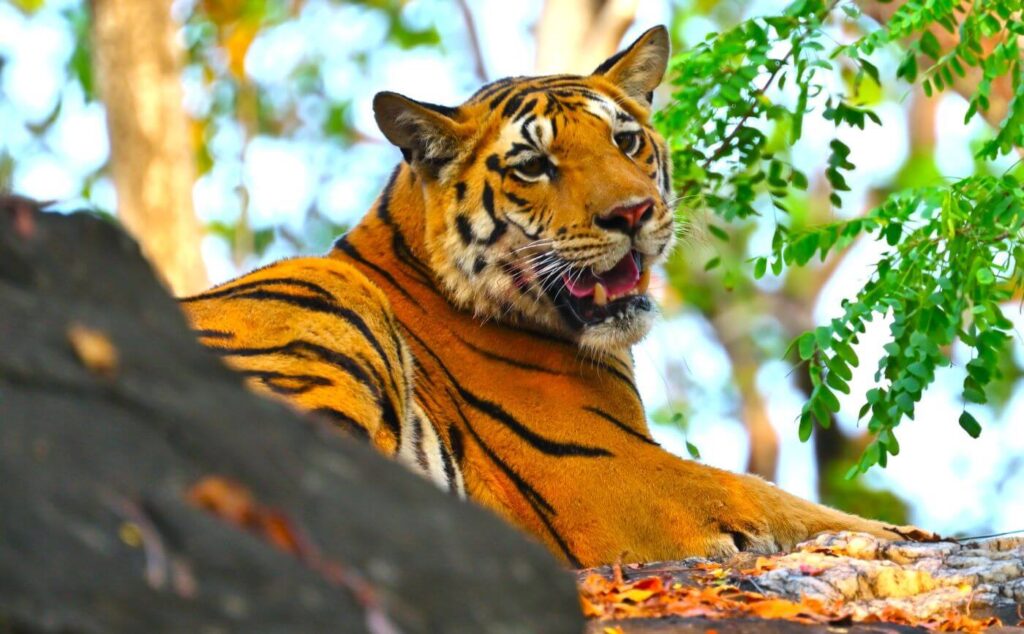
Pench National Park, located between Madhya Pradesh and Maharashtra, is another great place to see tigers. It was one of the inspirations for “The Jungle Book.”
Jeep safaris in Pench offer a good chance to see tigers, especially in the summer when they come out to drink water. The Pench River, which flows through the park, adds to its beauty and provides a habitat for many animals.
Panna National Park
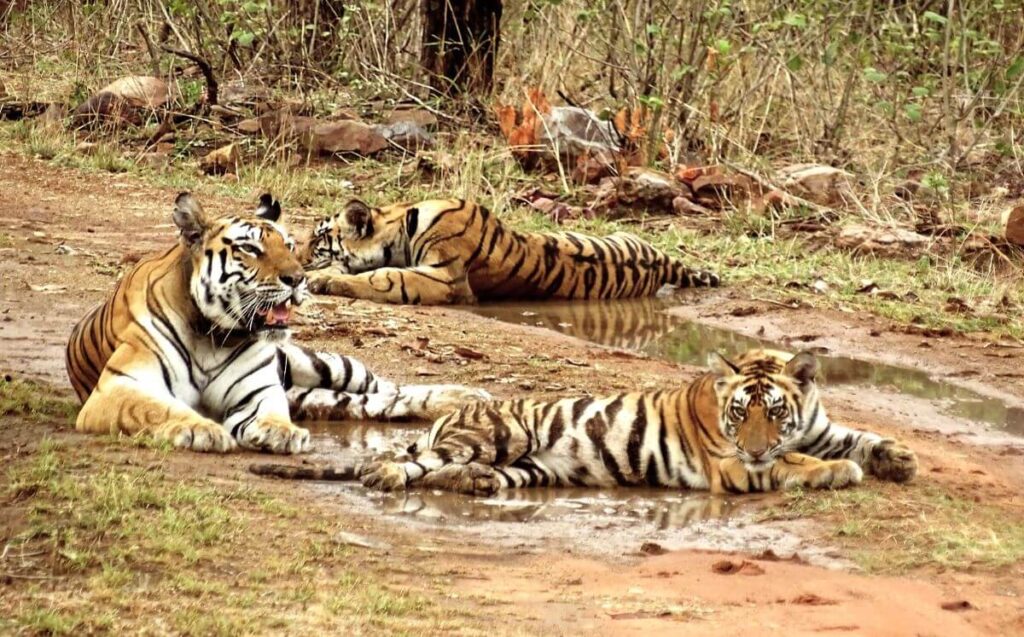
Panna National Park in Madhya Pradesh is known for its tiger conservation efforts. The park had lost most of its tigers, but a successful reintroduction program has helped increase their numbers.
A boat safari on the Ken River is a unique way to see the park’s wildlife. Tigers, leopards, and crocodiles can often be spotted along the riverbanks.
Sariska Tiger Reserve
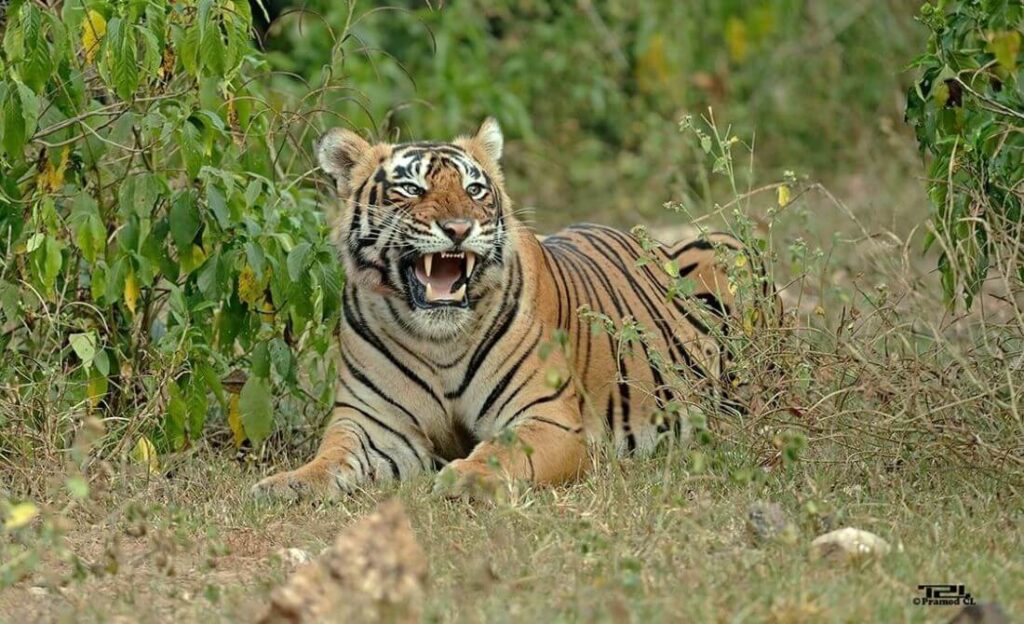
Sariska Tiger Reserve in Rajasthan is known for its successful tiger reintroduction program. The park has dry forests and rocky landscapes that provide a good habitat for tigers.
Jeep safaris in Sariska offer a good chance of spotting tigers, along with leopards and hyenas. Visitors can also explore historical sites like the 10th-century Neelkanth Temple inside the park.
Best Time to See Tigers in India
The best time for a tiger safari in India is between October and June. The summer months (March to May) are the best because tigers come out to drink water, making sightings easier.
Popular Routes for Tiger Safari in India
- Golden Triangle & Ranthambore – Combines Delhi, Agra, Jaipur, and Ranthambore.
- Madhya Pradesh Tiger Circuit – Covers Bandhavgarh, Kanha, and Pench.
- South India Wildlife Circuit – Includes Bandipur, Nagarhole, and Periyar.
Why Should You Go for a Tiger Safari in India?
A tiger safari in India is a once-in-a-lifetime experience. It allows visitors to see tigers in their natural habitat, support conservation efforts, and explore India’s rich wildlife and landscapes.
Tips for Tiger Safari in India
Here are some essential Tiger Safari Tips to enhance your wildlife experience in India:
1. Choose the Right National Park
- Parks like Bandhavgarh, Ranthambore, and Tadoba have a high chance of tiger sightings.
- Research the best zones within each park, as some have better tiger activity than others.
2. Book Safaris in Advance
- Most national parks have limited safari permits, so book online well in advance, especially during peak seasons (October to June).
3. Best Time for Tiger Sightings
- Summer (March to May) is the best time since tigers come out to drink water.
- Early morning and late afternoon safaris offer the best chances to spot wildlife.
4. Choose the Right Safari Vehicle
- Jeep Safari (6-seater) offers a better experience and flexibility.
- Canter Safari (larger vehicle) is a budget-friendly option but less personalized.
5. Follow Park Rules and Guidelines
- Stay inside the vehicle at all times.
- Keep noise levels low to avoid disturbing wildlife.
- Do not feed animals or litter in the park.
6. Dress Comfortably & Blend In
- Wear earthy tones like green, brown, or beige to blend with the surroundings.
- Avoid bright colors and strong perfumes, as they can alert animals.
7. Carry Essential Gear
- Binoculars & Camera – For close-up views and capturing memories.
- Hat, Sunglasses & Sunscreen – Protection from the sun.
- Water & Snacks – Safaris can last 3–4 hours.
8. Be Patient & Observant
- Tiger sightings are not guaranteed, so enjoy the overall wildlife experience.
- Look for warning signs like deer alarm calls and monkey movements to locate a tiger.
9. Respect Wildlife & Nature
- Do not make sudden movements or loud noises.
- Never ask your driver or guide to break park rules for a closer sighting.
10. Hire an Experienced Guide
- Knowledgeable guides increase your chances of spotting tigers and other wildlife.
- They can explain animal behavior, tracks, and unique facts about the park.
FAQs for Tiger Safari in India
Parks like Bandhavgarh, Ranthambore, Tadoba, and Kanha have the highest chances of spotting tigers. These parks have good tiger populations and frequent sightings.
The best time is from October to June, with the highest chances of sightings during the summer months (March to May) when tigers come near water sources.
You can book safaris online through the official websites of national parks or via us by dropping an email to info@vardhmanvacations.com. Booking in advance is recommended, especially during peak seasons.
Yes, tiger safaris are safe as they are conducted by trained guides and in regulated vehicles. However, it is important to follow safety rules, stay inside the vehicle, and avoid making loud noises.
A typical tiger safari lasts between 3 to 4 hours. Most parks offer morning and afternoon safaris, with a limited number of vehicles allowed per session.
Jeep Safari (6-seater) – More personal and better for tiger sightings.
Canter Safari (20-seater) – Budget-friendly but less flexible.
Boat Safari – Available in Sundarbans National Park for spotting swimming tigers.
Wear earthy tones like green, brown, or beige to blend with the environment. Avoid bright colors, strong perfumes, and heavy accessories. Comfortable clothes and closed shoes are recommended.
Yes, children are allowed, but they should be at least 5 years old. Ensure they stay quiet and follow safety rules during the safari.
Besides tigers, you may see leopards, elephants, deer, wild dogs, sloth bears, and various bird species depending on the park.
The cost varies by park and vehicle type:
Jeep Safari: ₹4,000 – ₹10,000 per vehicle (for 6 people).
Canter Safari: ₹1,000 – ₹2,500 per person.
Prices may be higher for foreign tourists.
Photography is allowed, but flash is prohibited as it disturbs wildlife. Some parks may charge extra for professional cameras with large lenses.
Yes, many parks offer forest lodges and luxury resorts near or inside the park for an immersive experience.
Yes, you need a permit, which is usually included in the safari booking. Permits are limited, so book early to secure your spot.
No, tiger sightings depend on luck and patience. However, experienced guides track tiger movements to increase the chances of spotting one.
A tiger safari offers a chance to witness the majestic Bengal tiger in the wild, experience India’s rich biodiversity, and support conservation efforts to protect these endangered animals.
Tiger safaris in India offer an exciting adventure for wildlife lovers. Plan your trip and experience the thrill of seeing a tiger in the wild!

